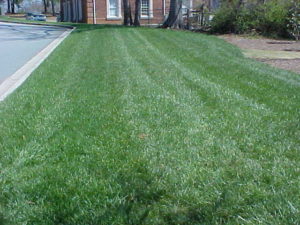Plant Health Alert – Growing Grass in Shade
go.ncsu.edu/readext?894738
en Español / em Português
El inglés es el idioma de control de esta página. En la medida en que haya algún conflicto entre la traducción al inglés y la traducción, el inglés prevalece.
Al hacer clic en el enlace de traducción se activa un servicio de traducción gratuito para convertir la página al español. Al igual que con cualquier traducción por Internet, la conversión no es sensible al contexto y puede que no traduzca el texto en su significado original. NC State Extension no garantiza la exactitud del texto traducido. Por favor, tenga en cuenta que algunas aplicaciones y/o servicios pueden no funcionar como se espera cuando se traducen.
Português
Inglês é o idioma de controle desta página. Na medida que haja algum conflito entre o texto original em Inglês e a tradução, o Inglês prevalece.
Ao clicar no link de tradução, um serviço gratuito de tradução será ativado para converter a página para o Português. Como em qualquer tradução pela internet, a conversão não é sensivel ao contexto e pode não ocorrer a tradução para o significado orginal. O serviço de Extensão da Carolina do Norte (NC State Extension) não garante a exatidão do texto traduzido. Por favor, observe que algumas funções ou serviços podem não funcionar como esperado após a tradução.
English
English is the controlling language of this page. To the extent there is any conflict between the English text and the translation, English controls.
Clicking on the translation link activates a free translation service to convert the page to Spanish. As with any Internet translation, the conversion is not context-sensitive and may not translate the text to its original meaning. NC State Extension does not guarantee the accuracy of the translated text. Please note that some applications and/or services may not function as expected when translated.
Collapse ▲People like lawns. Kids enjoy expansive green areas where they can play. Lawns can improve the curb appeal of homes. However, some homes are very shady making growing lawns more difficult.
Grasses are generally FULL SUN plants. Grasses need at least 6 hours of full sun to be healthy. You do not find grasses growing in the shade of trees in nature very often. Sod farms are in full sun locations to maximize grass growth and health. Grass lawns can be grown in the shade of trees but will need extra inputs of water, fertilizer, annual over-seeding and sometimes pesticides to remain healthy.

This non-irrigated fescue lawn is turning brown in the shade of the trees where tree roots are using up the limited soil water. This lawn needs to be irrigated and fertilized to overcome the competition with the trees.
PLANTS NEED THREE THINGS TO GROW: SUNLIGHT, WATER AND NUTRIENTS. Where people do try to grow grass in the shade of trees, the trees can outcompete grasses for sunlight, water and nutrients. Trees will get plenty of sun while grass gets very little. Plants use sunlight to create food utilizing photosynthesis. This means grasses grown in shade may be less healthy and more prone to disease. Tree roots and grass roots occupy the same soil and compete for nutrients and water. Shady lawns will slowly become thinner as grass plants eventually die out if lawns are not supplemented with nutrients and water and overseeded annually.
Conversely, grass lawns can negatively affect trees. Grasses may outcompete trees for limited soil resources. Herbicides used on grasses to control broadleaf weeds may affect tree health negatively. Lawn mowers are heavy and can compact soils and damage tree roots. String weed trimmers can damage tree trunks if used improperly. Studies have shown that trees are healthier when the critical root zone is mulched with 2-3 inches of mulch out to the dripline of the tree canopy.

Properly maintained fescue grass makes a beautiful and inviting lawn. Grass grown in full sun performs better and makes for a healthier lawn.
Grass can be successfully grown in shade but it requires a little extra work. Simply seeding or sodding once without after care will not work in many cases. If you do have grass growing in the shade of trees, there are a few things you can do improve the stand of grass:
- hire an arborist to trim trees to allow more light to get to the grass
- perform a soil test to determine how much lime is needed to adjust the pH and what fertilizer would best
- utilize shade tolerant fescues which can survive under four hours of sunlight
- aerate and overseed shady lawns each fall in September to fill in areas that have thinned due to shade; Weeds and mosses can invade thinning grass stands
- irrigate shady lawns during periods of drought using the equivalent of one inch of water per week
- fertilize shady lawns in the fall and spring
- mow shady lawns infrequently and leave the grass as tall as possible
- avoid foot traffic in shady lawns
If you have given up on your shady lawn, there are alternatives.
- mulch tree root zones
- use native shade shrubs and flowers to create shade gardens
- cultivate moss lawns
- use shade groundcovers such as mondo grass to act as a lawn




